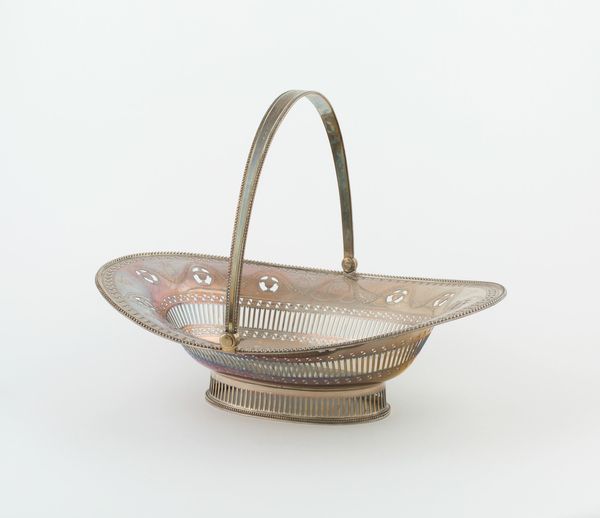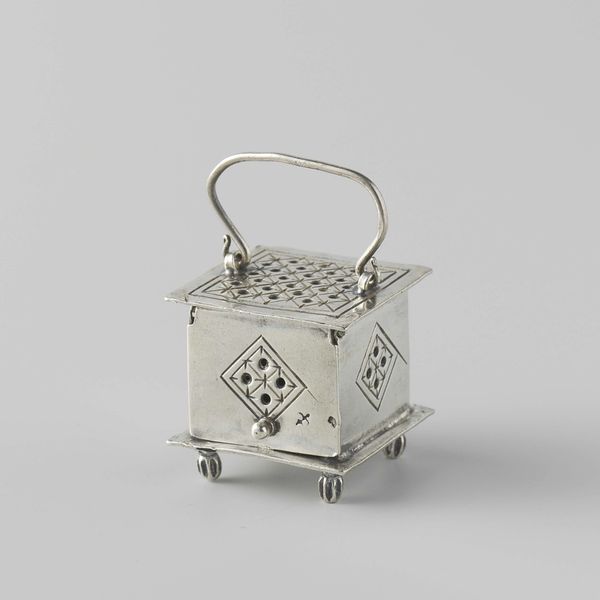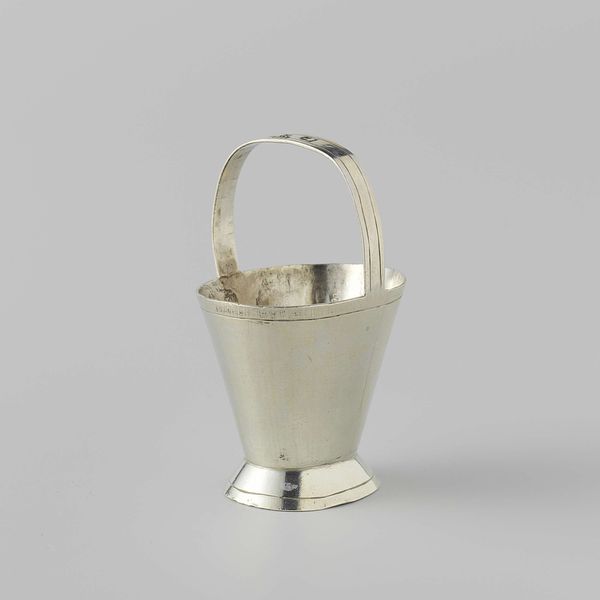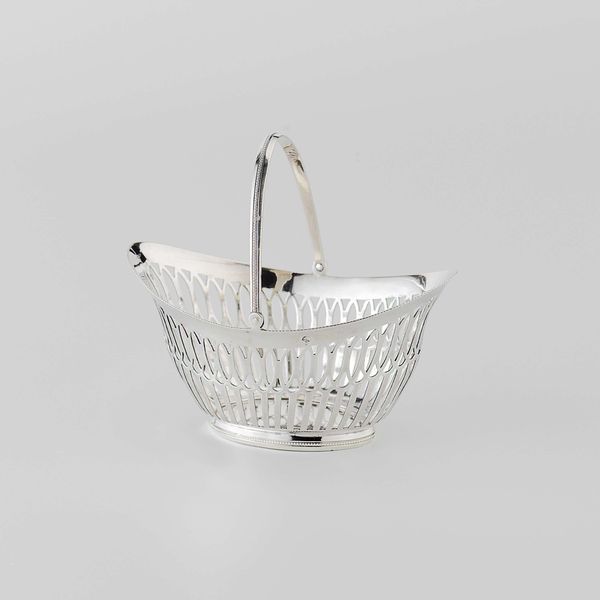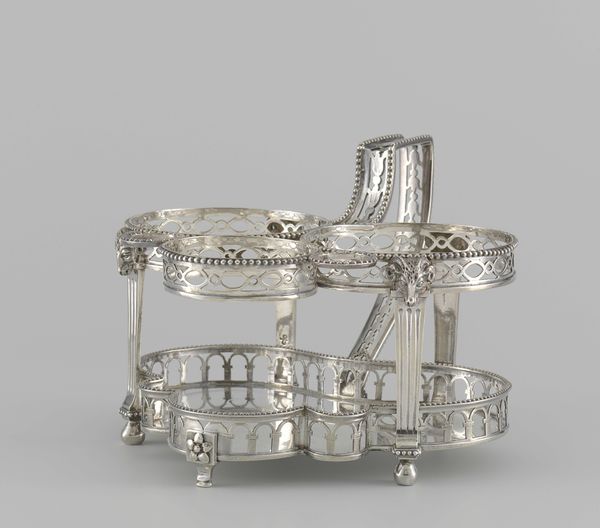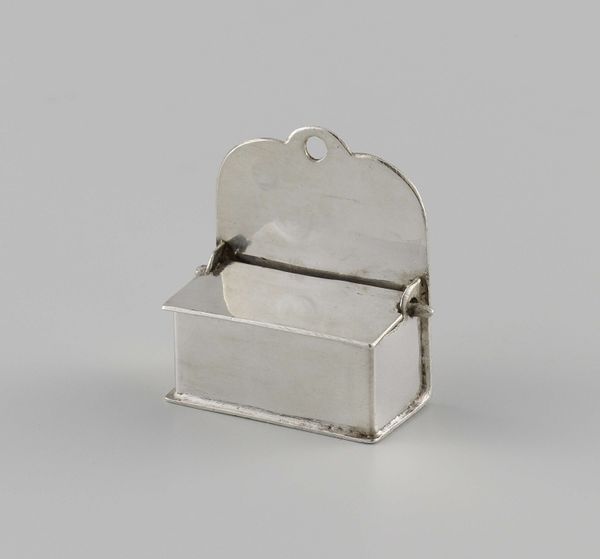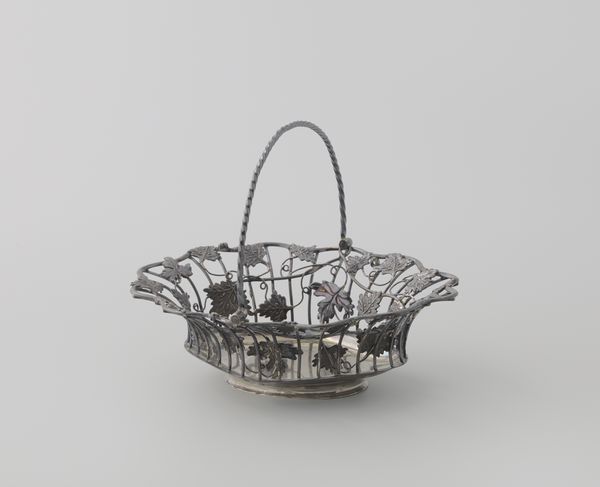
metal, sculpture
#
art-nouveau
#
metal
#
form
#
geometric
#
sculpture
#
decorative-art
Dimensions: width 8 cm, height 9.5 cm, depth 5 cm
Copyright: Rijks Museum: Open Domain
The Wiener Werkstätte, active from 1903 to 1932, crafted this glass basket, or “Binnenbak van glas” as it's known, during a transformative period in European design. The Werkstätte emerged from the Vienna Secession, a movement seeking to break from the constraints of academic art and embrace new forms of expression. This basket, with its grid-like structure, encapsulates the Werkstätte’s ethos of uniting art and craft. Created by a collective, the Werkstätte often obscured individual authorship, prioritizing a unified aesthetic vision. The simplicity and functionality reflect a desire to democratize design, making beautiful objects accessible for everyday use. Yet, this ideal was complicated by the Werkstätte's clientele, primarily the upper middle class, revealing a tension between democratizing design and catering to an elite market. Despite financial difficulties, the Werkstätte left a lasting legacy, shaping modern design and influencing subsequent movements. This glass basket, born from a moment of artistic revolution, speaks to the complex interplay of aesthetics, social ideals, and economic realities.
Comments
No comments
Be the first to comment and join the conversation on the ultimate creative platform.
